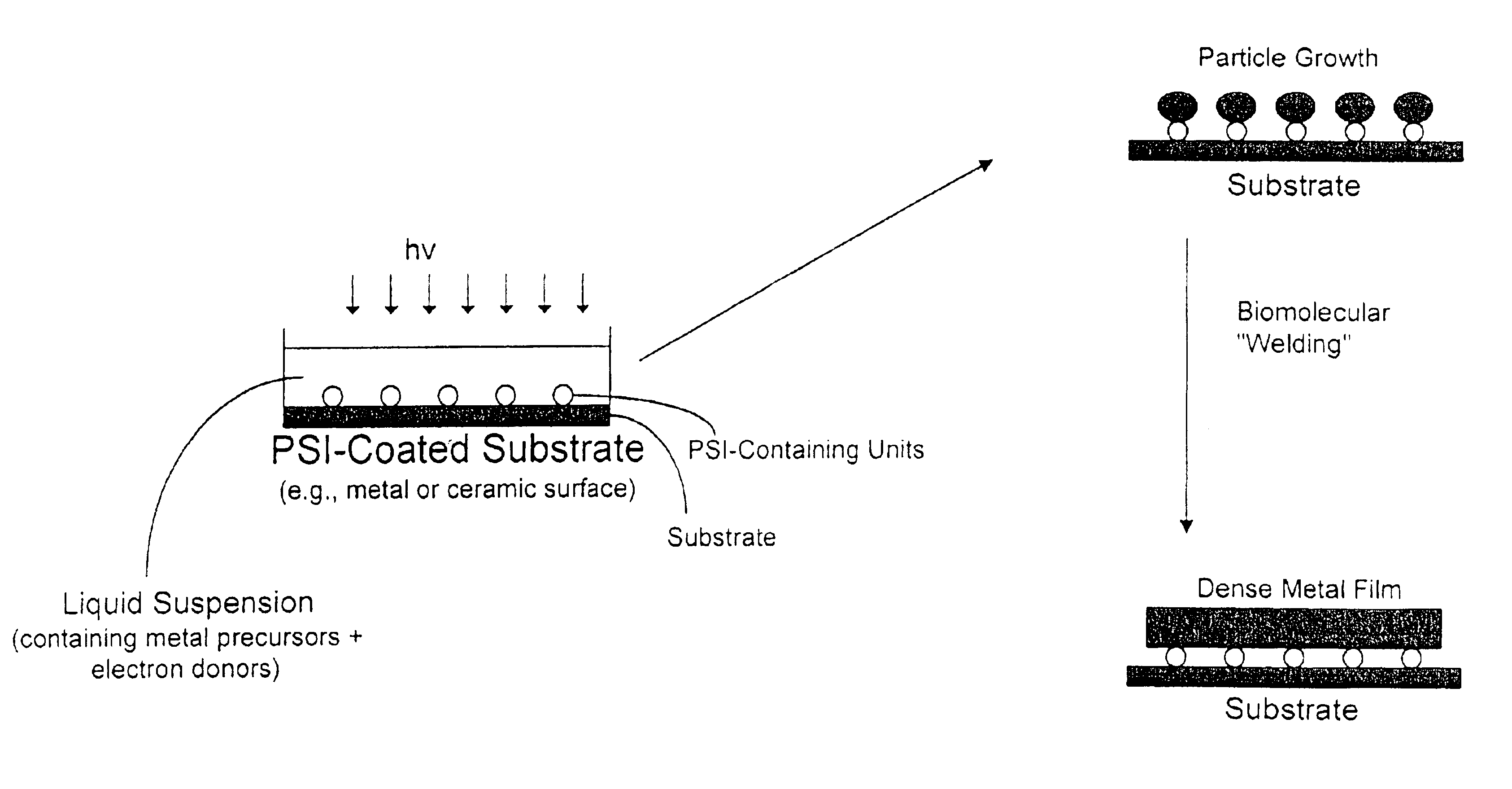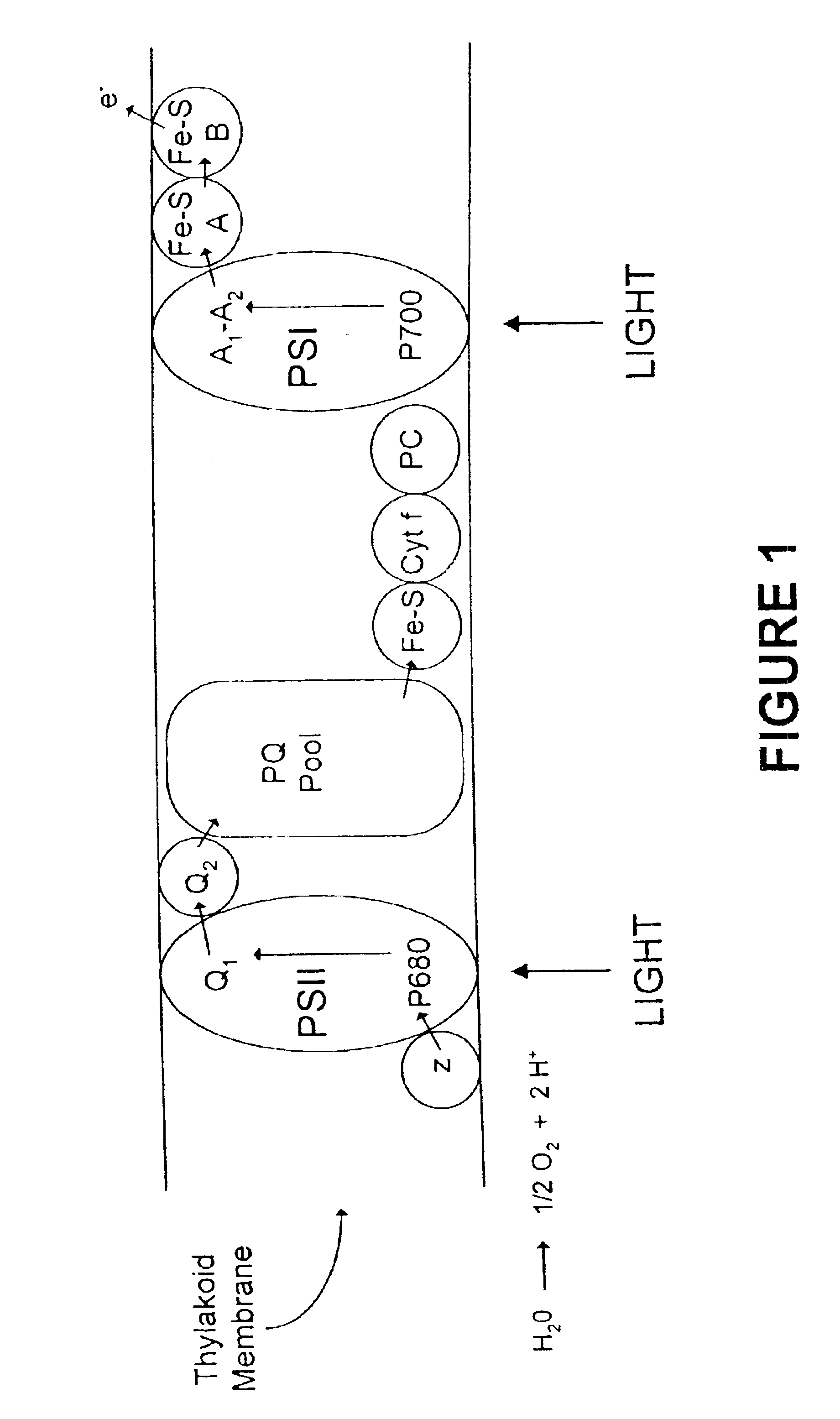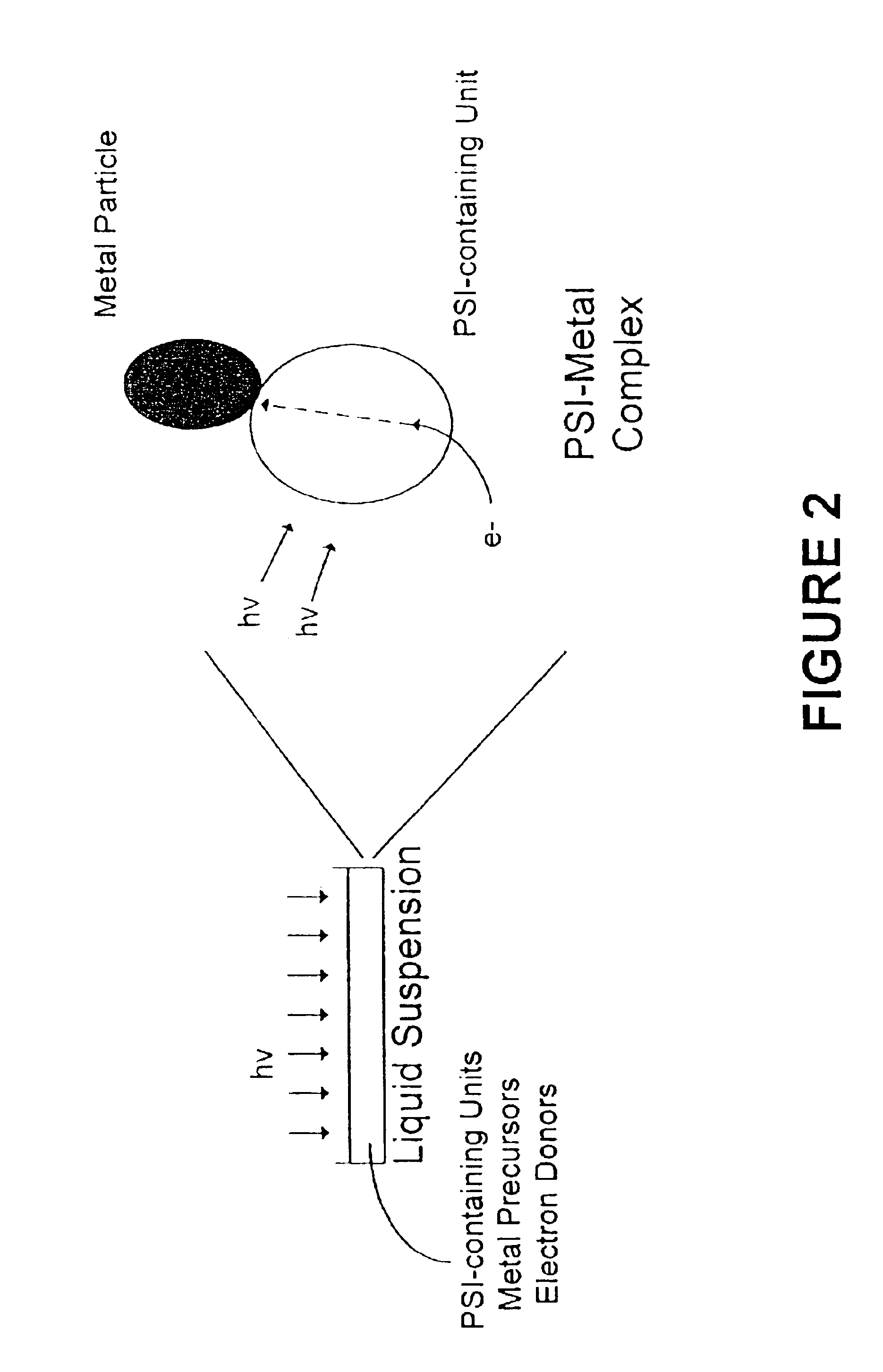Photobiomolecular deposition of metallic particles and films
- Summary
- Abstract
- Description
- Claims
- Application Information
AI Technical Summary
Benefits of technology
Problems solved by technology
Method used
Image
Examples
examples
Photobiomolecular Deposition of a Platinum Film
Type C chloroplasts are isolated according to the method of Reeves and Hall (1980). In this preparation, the chloroplast envelope is osmotically ruptured, exposing the thylakoid membranes to the external aqueous medium. The thylakoids are suspended in Walkers assay medium and adjusted to a final chlorophyll concentration of about 3 mg. A solution of chloroplatinic acid neutralized to pH 7 is added in the dark to the thylakoid suspension to give a final concentration of 1 mM in the suspension (this value is not critical provided there is an excess of hexachloroplatinate ions to photosystem I reaction centers). The liquid suspension is illuminated with a xenon stroboscopic light source (GenRad Type 1539) set to be triggered by a pulse generator (Hewlett-Packard 8011A). The frequency of the flashing is 10 Hz and the duration is 3 μsec at half height. Pulsed light exposure of the suspension is performed for 90 minutes. Following the light t...
PUM
| Property | Measurement | Unit |
|---|---|---|
| Diameter | aaaaa | aaaaa |
| Size | aaaaa | aaaaa |
| Metallic bond | aaaaa | aaaaa |
Abstract
Description
Claims
Application Information
 Login to View More
Login to View More - R&D
- Intellectual Property
- Life Sciences
- Materials
- Tech Scout
- Unparalleled Data Quality
- Higher Quality Content
- 60% Fewer Hallucinations
Browse by: Latest US Patents, China's latest patents, Technical Efficacy Thesaurus, Application Domain, Technology Topic, Popular Technical Reports.
© 2025 PatSnap. All rights reserved.Legal|Privacy policy|Modern Slavery Act Transparency Statement|Sitemap|About US| Contact US: help@patsnap.com



